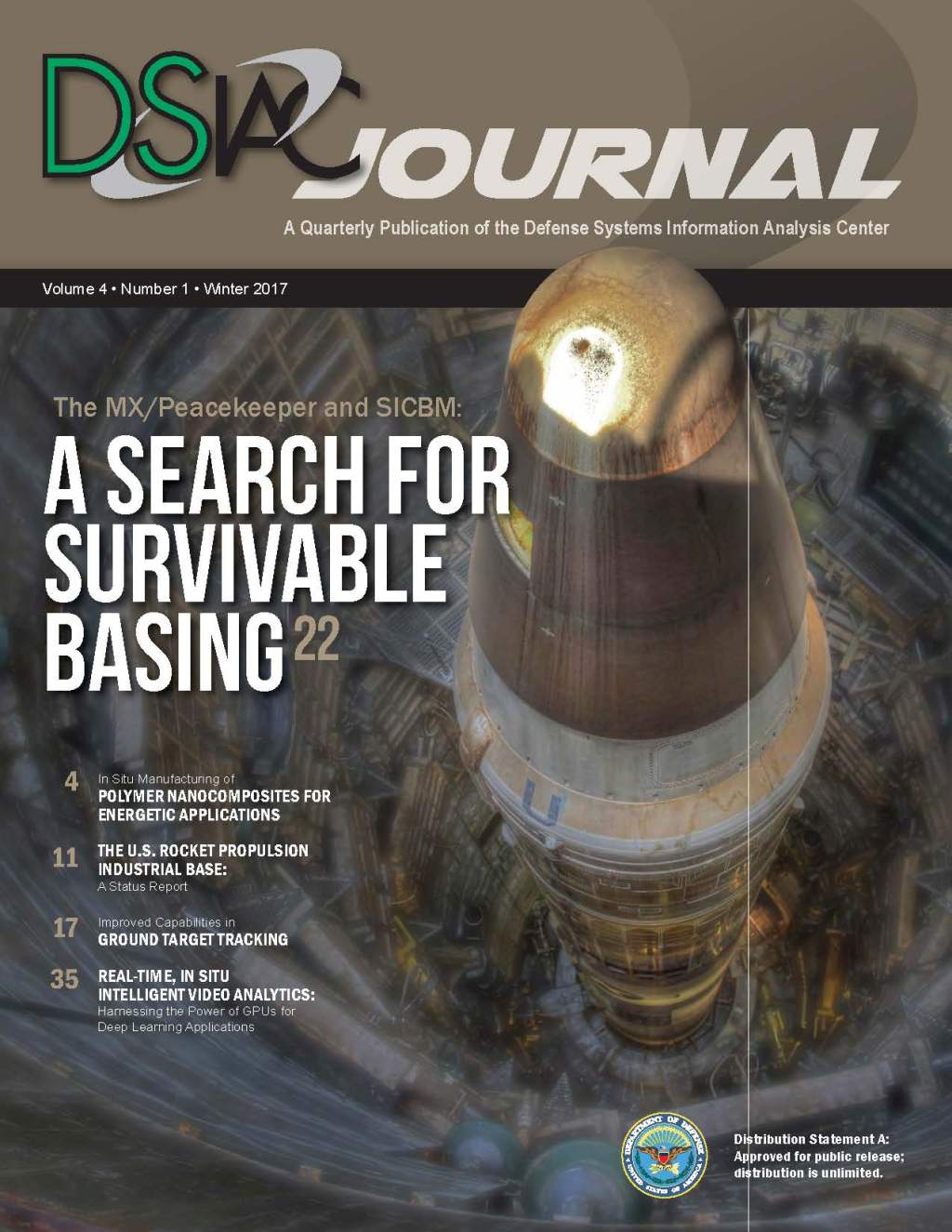Ever wonder how the Cold War and the nuclear arms race of the 1960s and ‘70s have continued to influence the U.S. strategic defense outlook? Both the United States and the Soviet Union developed and deployed intercontinental ballistic missiles (ICBMs) as a result. These ICBMs were initially deployed in land-based silos considered to provide “safe” or survivable basing options. In other words, these fixed targets had limited vulnerability concerns given the early ICBMs’ limited precision. But as second- and third-generation ICBM weapon systems developed, so did the precision of their strike capability, which has led to ongoing concerns regarding potential fratricide based on the strategic deployment of these missiles and their nuclear warhead payloads.
In our feature article this quarter, Eugene Sevin discusses the vulnerability of U.S. ICBM systems, land-based deployment strategies, and associated silo hardening. Various basing modes are discussed for existing ICBM systems’ survivability along with vulnerability hardening alternatives. Additionally, mobile basing insights are provided, recognizing the potential to leverage Ground-Based Strategic Deterrent (GBSD) hardening strategies and technologies.
The potential of nanotechnology to influence the energetic industry continues to tantalize propellant and explosive formulators. In Mike Fisher’s related article, he highlights the significant benefits and promise offered by ongoing advancements in nanoparticle polymer composites and processing, provided that related manufacturing challenges can be overcome.
Conversely, the U.S. rocket propulsion industry is facing numerous challenges that have weakened the associated infrastructure and workforce capability over the past 60 years. An aging workforce, oscillating budgets, manufacturing consolidation, obsolescence issues, and the dynamic complexities associated with foreign trade laws are limiting related technology advancements. However, there are some signs of resurgence, with increases in defense and space budgets highlighting the recognition for needed investment in rocket propulsion technology. Albert DeFusco’s article explores the infusion of capital investment on rocket propulsion industry and the associated positive impacts to the future of our defense preparedness and space travel.
Advancements in modeling and simulation (M&S) tools are also critical to maintaining our defense preparedness despite the increasing challenges of Department of Defense (DoD) budget constraints. M&S continues to be extremely important across all DoD acquisition-cycle phases, offering four major benefits: cost savings, accelerated schedule, improved product quality, and cost avoidance. This DSIAC Journal issue includes two articles that highlight two such M&S tools. Both tools identify evolving technology developments for improved situational awareness in a variety of intelligence, surveillance, and reconnaissance (ISR) scenarios, and with application to autonomous and weapons systems alike.
The first article—written by Teresa Selee, Jacqueline Fairley, and Ryan Hersey—highlights advancements in ground target tracking via a physics-compliant terrain scattering model that simulates the space-time statistics of radar returns from ground terrain as observed by an airborne radar. The M&S tool known as the Adaptive Sensor Prototyping ENvironment (ASPEN™) has recently been enhanced by the development of a ground target tracking module, and results are showing the value of the new modeling capability as a top-level indicator for vehicle and dismount tracking.
The second M&S-related article—written by Shawn Recker and Christiaan Gribble—deals with a convergence between deep learning technology and the use of computational algorithms to process visual and audio data. Sentinel™, a tool for real-time in situ intelligent video analytics (IVA), combines state-of-the-art techniques in high-performance computing (HPC), modern data reduction and analysis techniques, and deep learning to realize automatic target recognition (ATR), tracking, event detection, and other visually oriented tasks. This system leverages increased efficacy of deep neural networks in both image and speech recognition tasks, coupled with increased performance via graphics processing unit (GPU) acceleration, to support human-in-the-loop deployment scenarios and address ISR problems in defense, homeland security, disaster relief, emergency response, and even home security.


